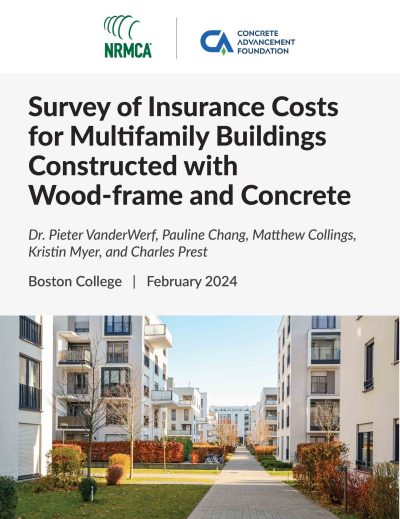Sources: Concrete Advancement Foundation and National Ready Mixed Concrete Association, Alexandria, Va.; CP staff
In a follow up to an initial 2017 study, the Concrete Advancement Foundation and National Ready Mixed Concrete Association quantify the expected underwriting cost differences between combustible versus noncombustible construction in their 2024 Survey of Insurance Costs for Multifamily Buildings Constructed with Wood-frame and Concrete. The current survey focuses on builder’s risk and commercial property insurance quotes for a typical wood-frame or concrete project—four levels, 15 one-bedroom and eight two-bedroom apartments on each—in Edgewater, N.J.; Towson, Md.; Orlando, Fla.; Dallas/Fort Worth, Texas; and Los Angeles.

Measured by annual costs per $100 of construction value, the insurance rates are lower in all five cities for concrete versus wood, builder’s risk coverage differences ranging from 4 percent to 20 percent less and commercial property coverage differences from 2 percent to 15 percent less. In their summary of the current survey, Boston College researchers Dr. Pieter VanderWerf and colleagues detail the process for obtaining underwriter quotes on the different construction methods.

“Understanding the true costs of building material selection, especially in areas subject to natural disasters, can encourage builders to make the right choice of more resilient construction for life safety and property protection,” says Concrete Advancement Foundation Chairman Francis “Hall” Chaney (Chaney Enterprises).
“Our industry has long recognized the benefits of resilient construction. The Boston College study once again quantifies these benefits from the insurance perspective and confirms building insurance costs are rising for less resilient construction, particularly in coastal and other higher hazard regions of the country,” adds NRMCA Senior Vice President, Codes and Standards, Shamim Rashid-Sumar, PE, FSFPE.